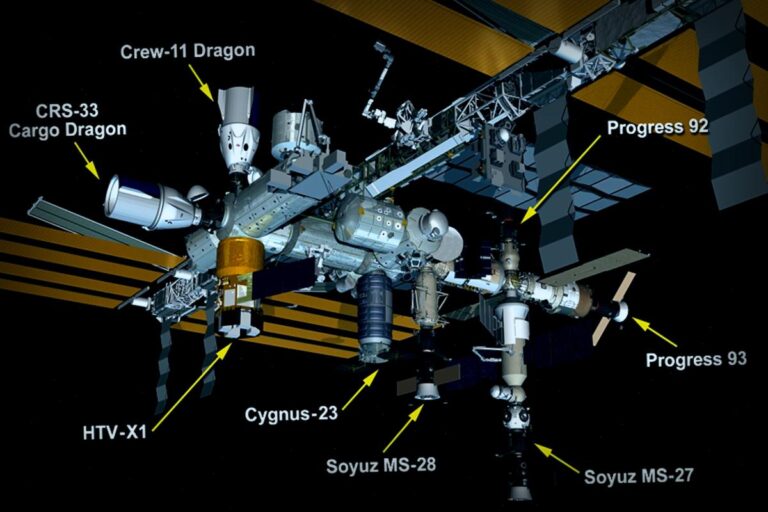SpaceX has already changed the game in launching rockets and satellite communications, and now it’s setting its sights on a new venture: space manufacturing. Elon Musk’s company is rolling out a project named Starfall, which aims to enable the production of various goods in space.
What makes SpaceX different from other players in the field, like Vast and Axiom? Instead of constructing large private space stations, they’re planning to utilize space capsules equipped as compact labs or factories launched into low Earth orbit. Once these capsules conduct research or create high-value products—think things like new pharmaceuticals or computer chips—they’ll return to Earth on their own.
The buzz around Starfall is already attracting attention, with SpaceX engaged in talks with potential clients. They’re expecting to kick off this initiative by the close of the decade.
For those curious about what’s been happening in space manufacturing, Forbes recently published an article that highlights experiments conducted on the International Space Station, showcasing how companies like Merck and Redwire are tapping into the space environment’s unique traits—like microgravity and vacuum conditions—to create products. The excitement is real, but the timeline for widespread implementation remains uncertain.
Some believe that establishing a solid space manufacturing sector could take decades—potentially pushing the timeline to our grandchildren’s generation. In contrast, several firms are banking on it happening sooner, aiming for the early 2030s.
So, what groundbreaking products might we see being manufactured in space that can’t be created on Earth?
- Next-gen pharmaceuticals focused on creating unified crystal production and formulation vital for turbocharging drug development.
- Tissue bioprinting for crafting transplantable organs using patients’ own stem cells.
- Advanced manufactured items, such as fiber optics, laser components, and parts for turbomachines.
The timeline for Starfall is especially intriguing, given that we’re expecting the International Space Station to retire by 2030. Companies like Redwire could seamlessly transition to this new venture, keeping their research and business afloat while providing solutions for paying clients.
SpaceX won’t be alone in this race for space manufacturing. Vast Aerospace aims to be the first on the scene with its Haven-1, a compact station designed to accommodate four astronauts for month-long missions, with its launch now slated for May 2026. They also plan an upsized Haven-2 station to debut between 2028 and 2032.
Axiom Space is also working on their own establishment, set for construction around 2027, aimed to finish in the early 2030s after successfully running multiple missions to the ISS.
Then there’s Orbital Reef, a collaborative effort from Blue Origin and Sierra Space to foster not just manufacturing and research but tourism as well, which is expected to start operations in 2027 or beyond.
Finally, we have Starlab, a commercial station developed by Starlab Space, targeted for launch no earlier than 2028 and consisting of both a service module and a lab/habitat module, specifically steering away from the tourist market.
One thing is clear: whether these stations s d, SpaceX is likely to profit from all of them. They currently dominate low Earth orbit transport through their Crew Dragon spacecraft, even as NASA and Boeing grapple with the delayed Starliner project that’s been bogged down in complications.
The pace of space-based manufacturing keeps everyone guessing. Visionaries like Jeff Bezos from Blue Origin dream of offloading heavy industry from Earth, thus reducing pollution and tackling climate shifts. Realizing this dream, should it come to pass, could take ages—perhaps even centuries.
SpaceX is no stranger to laying the groundwork for commercial space ventures, leading in both launching technologies and satellite Internet with Starlink.
With avenues like Starfall or perhaps an ambitious space station of their own, SpaceX is poised to stake its claim in the birth of the upcoming space manufacturing market. And let’s be real—it’s easy to see why Musk holds the title of the wealthiest person globally.
Mark R. Whittington is a frequent commentator on space policy and author of works including Why is It So Hard to Go Back to the Moon?, The Moon, Mars and Beyond, and Why is America Going Back to the Moon?. He blogs at Curmudgeons Corner.
Copyright 2025 Nexstar Media, Inc. All rights reserved. This material may not be published, broadcast, rewritten, or redistributed.
For the latest news, weather, sports, and streaming video, head to The Hill.




















